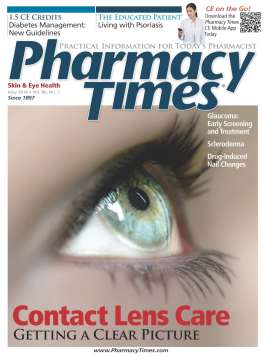Publication
Article
Pharmacy Times
Case Studies
Case studies regarding treatment for migraines and adjusting antihypertensive medication based on the new JNC 8 guidelines.
Case 1
AM, a 25-year-old woman, has no significant medical history and is not taking prescription medications. She approaches your pharmacy counter to ask about something “stronger” for her migraines. OTC ibuprofen initially helped her migraines, which were occurring once every few weeks, but now she is having almost daily throbbing headaches with associated nausea and photophobia. She is taking ibuprofen multiple times a day, every day, with little relief, and has been missing work frequently.
What would you recommend to AM regarding treatment options for her migraines?
Case 2
HC is a 73-year-old Caucasian man with essential hypertension. He comes to your pharmacist-run hypertension clinic today for his semiannual visit, and his blood pressure (BP) reading is 127/80 mm Hg. He has been taking lisinopril 20 mg once daily and hydrochlorothiazide 12.5 mg once daily for the past 2 years, and his BP has consistently been well controlled (<140/90 mm Hg). Over this this same period, HC has not complained of any side effects due to his antihypertensive medications. HC has no other comorbidities and takes no other prescription or OTC medications (other than occasional acetaminophen use). You recall that the recently released “Evidence-Based Guideline for the Management of High Blood Pressure in Adults” from the Eighth Joint National Committee (JNC 8) raised the BP goal for persons 60 years and older to <150/90 mm Hg.
Do HC’s antihypertensive medications need to be adjusted in lieu of these new BP goals?
ANSWERS
Case 1: AM is suffering from migraines that may have recently evolved into medication-overuse headaches (excessive ibuprofen use). AM may benefit from a prophylactic migraine therapy.
Although numerous medications are touted for migraine prophylaxis, only 6 medications are rated as having strong evidence of established efficacy (level A) by the American Academy of Neurology’s migraine prevention guidelines. These medications include antiepileptics (divalproex sodium, valproic acid, topiramate) or 1 of 3 beta-blockers (metoprolol, propranolol, timolol). The relative efficacy of these agents has not been well established; therefore, choosing between agents should be based on the presence of comorbid conditions, side effect profiles, and tolerability. Successful therapy is often defined by a 50% reduction in headache frequency, and trial and error with a couple of different medications is often needed. AM will likely still need to take medications to treat acute symptoms if she suffers a migraine attack.
Because AM has no medical history or comorbid conditions, 1 of the beta-blockers (ie, propranolol 80 mg extended release once daily) is a reasonable first choice. Antiepileptics may not be the optimal choice for AM because she is of child-bearing age and antiepileptics have been linked to birth defects.
In addition to prophylactic medication, avoiding migraine triggers can also help decrease migraine frequency. Triggers include foods such as cheese, alcohol, chocolate, aspartame (eg, in diet sodas), and nitrate-containing foods (eg, processed meats); stress; changes in sleep patterns; and environmental factors (eg, noise, odors, hunger, thirst). Patients should be advised to keep a headache diary to assess their response to therapy and identify these common triggers.
Case 2: According to the new JNC 8 guidelines, treating high BP to a goal of <150/90 mm Hg reduces patients’ risk of coronary disease, stroke, renal failure, and death. However, the guidelines also note there is evidence suggesting that lowering systolic BP further (<140 mm Hg) in this age group likely provides no additional benefit.
Because of previous guideline recommendations (JNC 7 called for a systolic BP of <140 mm Hg), many treated patients have BPs well below the new goal. However, according to JNC 8, in the general population 60 years and older, pharmacologic treatment does not need to be adjusted unless treatment is poorly tolerated or adversely affecting patient health or quality of life (ie, Expert Opinion—Grade E).
Consequently, no change to HC’s antihypertensive regimen is required.
function showAnswer() {document.getElementById("answer").style.display = 'block';document.getElementById("link").style.display = 'none';}
Dr. Mearns is health economics and outcomes research fellow at Hartford Hospital Evidence-Based Practice Center, and Dr. Coleman is professor of pharmacy practice, as well as codirector and methods-chief at Hartford Hospital Evidence-Based Practice Center, at the University of Connecticut School of Pharmacy.







